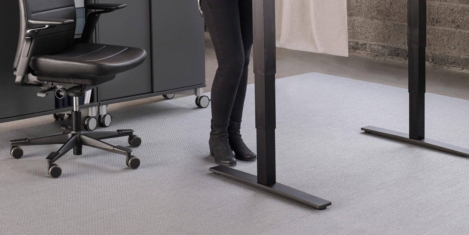October 18, 2017
Over a third of UK staff say employers offer no flexible working benefits
 British workers are lagging behind employees from other countries when it comes to flexible working hours and benefits like extended leave, suggests new research. New independent research commissioned by travel specialists Opodo.co.uk compared Britain with other nations across Europe and the USA, which reveals that British companies are lagging behind other businesses when it comes to flexible working. Three-quarters of employees in the UK (75 percent) don’t believe they have a generous holiday allowance and 84 percent aren’t offered time back in lieu for days worked over the weekend. It’s of no surprise then that 69 percent of Brits don’t think they have a good work-life balance.
British workers are lagging behind employees from other countries when it comes to flexible working hours and benefits like extended leave, suggests new research. New independent research commissioned by travel specialists Opodo.co.uk compared Britain with other nations across Europe and the USA, which reveals that British companies are lagging behind other businesses when it comes to flexible working. Three-quarters of employees in the UK (75 percent) don’t believe they have a generous holiday allowance and 84 percent aren’t offered time back in lieu for days worked over the weekend. It’s of no surprise then that 69 percent of Brits don’t think they have a good work-life balance.














 The majority (94 percent) of workers are open to flexible ways of working such as part-time, freelance, contract, temporary or independent contract work a new report from ManpowerGroup has revealed. Coining the trend as NextGen work, the research suggests this approach to a job is a choice (81 percent) not a last resort (19 percent). Findings from #GigResponsibly: The Rise of NextGen Work – a global survey of 9,500 people in 12 countries – identifies a shift towards this new way of getting work done, and that it works for people and employers. People were asked how they want to work, what motivates them and their views on NextGen Work. More control over their schedule (42 percent), boosting their bank account (41 percent) and developing new skills (38 percent) are top reasons why this flexible kind of work is on the rise. The report also found that this flexible approach is not just attractive to Millennials, as meaningful work and employer appreciation are valued more by Boomers than any other generation. More than 80 percent of US workers say NextGen Work is a choice, not a last resort, and builds resilience for less predictable futures.
The majority (94 percent) of workers are open to flexible ways of working such as part-time, freelance, contract, temporary or independent contract work a new report from ManpowerGroup has revealed. Coining the trend as NextGen work, the research suggests this approach to a job is a choice (81 percent) not a last resort (19 percent). Findings from #GigResponsibly: The Rise of NextGen Work – a global survey of 9,500 people in 12 countries – identifies a shift towards this new way of getting work done, and that it works for people and employers. People were asked how they want to work, what motivates them and their views on NextGen Work. More control over their schedule (42 percent), boosting their bank account (41 percent) and developing new skills (38 percent) are top reasons why this flexible kind of work is on the rise. The report also found that this flexible approach is not just attractive to Millennials, as meaningful work and employer appreciation are valued more by Boomers than any other generation. More than 80 percent of US workers say NextGen Work is a choice, not a last resort, and builds resilience for less predictable futures.


 With a plethora of reports around that generalise the behaviour of an entire generation of people, yet another exploration of the Millennial has to be approached with caution. But for this latest study, “The Millennial mindset: Work styles and aspirations of the most misunderstood worker”,
With a plethora of reports around that generalise the behaviour of an entire generation of people, yet another exploration of the Millennial has to be approached with caution. But for this latest study, “The Millennial mindset: Work styles and aspirations of the most misunderstood worker”, 



 The majority of UK employees (61 percent) do not feel encouraged by their employer to lead an active lifestyle, despite most managers agreeing that exercise positively impacts employees’ productivity (78 percent) and their ability to handle stress (82 percent) claims new research from AXA PPP healthcare. Of those British employees who do exercise after work, nearly half (46 percent) would prefer to do so before work but 79 percent blame a lack of time in the morning; yet for those who find time to be physically active before work, three quarters (75 percent) feel it spurs them on to be more effective in the morning while 69 percent feel more productive. More worryingly, nearly half of employees (45 percent) of employees admit they do not do the NHS recommended 30 minutes of daily exercise, five times a week, but finding time to be physically active during the working day can be difficult, or undesirable. Sixty?two percent of employees with good intentions to exercise at work find they’re cancelling their lunchtime exercise plans due to workload or work commitments.
The majority of UK employees (61 percent) do not feel encouraged by their employer to lead an active lifestyle, despite most managers agreeing that exercise positively impacts employees’ productivity (78 percent) and their ability to handle stress (82 percent) claims new research from AXA PPP healthcare. Of those British employees who do exercise after work, nearly half (46 percent) would prefer to do so before work but 79 percent blame a lack of time in the morning; yet for those who find time to be physically active before work, three quarters (75 percent) feel it spurs them on to be more effective in the morning while 69 percent feel more productive. More worryingly, nearly half of employees (45 percent) of employees admit they do not do the NHS recommended 30 minutes of daily exercise, five times a week, but finding time to be physically active during the working day can be difficult, or undesirable. Sixty?two percent of employees with good intentions to exercise at work find they’re cancelling their lunchtime exercise plans due to workload or work commitments.









October 10, 2017
We (still) need to talk about mental health in the workplace
by Liam Butler • Comment, Wellbeing
(more…)